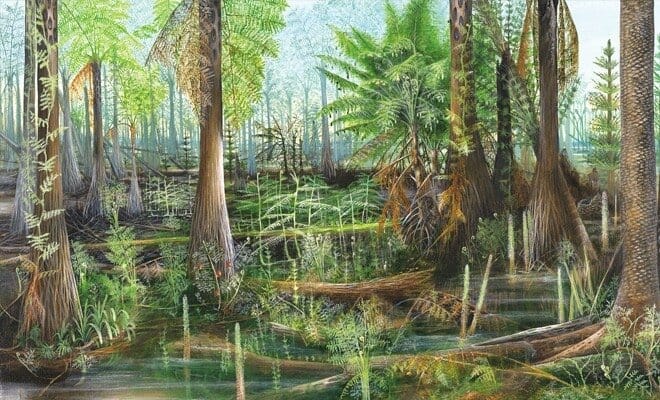A Brief Evolutionary Timeline of the Plant Kingdom
Organisms within the Plant Kingdom are organized according to their evolutionary groups, beginning with algae and unfolding over time into the highly developed flowering plants. For the most part, organisms within the Plant Kingdom share the ability to produce their own food through from sunlight, through photosynthesis.
The oldest organisms we find within the Plant Kingdom are algae, mosses & liverworts, and lichens (which are actually a symbiotic partnership between algae and fungi–blurring the lines of classification).
A significant development in the evolutionary history of plants began with ferns and their relatives. These plants started to develop increased cell differentiation along with vascular systems–vessels that are able to transport water and nutrients around the plant. They include true ferns, club mosses, and horsetails.
The next evolutionary phase introduced seed producing plants (spermatophytes... sperma = seed). Gymnosperms were the first of these more complex plant life forms to emerge producing more elaborate vascular systems and specialized anatomical structures: lignified (woody) tissue for structural support, and cones for reproduction. These seed-producing plants include conifers, cycads, Ginkgo, and gnetophytes.

The largest and most diverse group of land plants, and also the group that has undergone the highest degree of evolutionary specialization are the angiosperms, or flowering plants. Like gymnosperms, they are seed-producing plants, but differ in that they produce flowers. Their ability to produce flowers in addition to other characteristics that differentiate them from other plants offer many ecological advantages that have allowed them to cover most of the earth and survive in instances where other plants can't.
The similarity between gymnosperms and angiosperms (both spermatophytes) is that they protect reproductive cells within specialized tissue. The term gymnosperm is derived from Greek and means "naked seed". The name is based on the unenclosed condition of their seeds. In angiosperms, seeds are enclosed in a carpel, which is part of the ovary. In this case, the term angiosperm is also derived from a composite greek work include angio (container, vessel) and sperma (seed), meaning, loosely 'contained or enclosed seed'.
Archaefrutctus liaoningensis is the earliest known angiosperm fossil, dated to approximately 125 million years ago. This species, along with most other early angiosperms, have gone extinct, giving way to more successful species. Amborella trichopada is an instance of an ancient angiosperm that has endured due to the ecosystem remaining mostly the same for millennia.
Around 60 million years ago, angiosperms had replaced most gymnosperms as the dominant tree species. Up until this point, Angiosperms were mostly woody species. The emergence of herbaceous (nonwoody) flowering plants allowed for more variation in a smaller time frame since herbaceous plants tend to have shorter life spans and are thus able to evolve more quickly.
At about this same time, angiosperms further distinguished themselves into Monocotyledons (monocots) and Dicotyledons (dicots). About 1/3 of all flowering plants are monocots.
Monocots possess only one cotyledon, or seed leaf, where dicotyledons possess two cotyledons. You can easily tell the difference between a monocot and dicot when a seed germinates as you will either see one initial leaf or two. Most plants that you will find dominate a habitat are dicots, with the exception of grasses which are monocots that are highly successful across the planet, largely due to their ability to withstand heavy grazing by ruminants and other land animals.


Member discussion